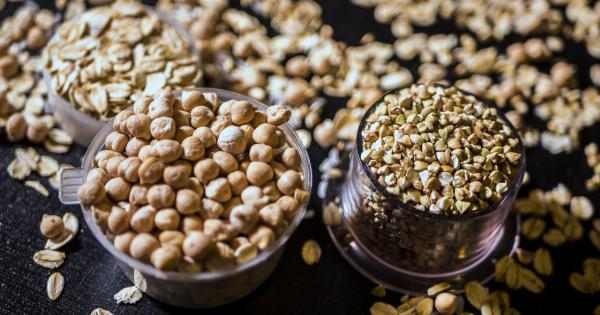Glycemic index (GI) is a measure of how quickly carbohydrates in food raise blood sugar levels. Foods with a high glycemic index are rapidly digested and absorbed, causing a sharp increase in blood sugar levels.
On the other hand, foods with a low glycemic index are digested and absorbed more slowly, resulting in a gradual rise in blood sugar levels.
The Importance of Glycemic Index
Understanding the glycemic index is crucial for individuals with diabetes or those aiming to manage their blood sugar levels. It also plays a vital role in weight management and overall health.
Recent studies have shed light on some shocking findings, challenging conventional wisdom about certain foods and their impact on blood sugar levels.
1. White Bread and Blood Sugar Levels
White bread has long been considered a dietary villain due to its high glycemic index. However, recent studies have shown that blood sugar response to white bread can vary greatly among individuals.
Some people experience a significant increase in blood sugar levels after consuming white bread, while others have a more moderate response. This suggests that factors beyond glycemic index, such as gut microbiota composition, can influence blood sugar regulation.
2. Surprising Glycemic Index of Watermelon
Watermelon, a juicy summer fruit loved by many, was often believed to have a high glycemic index. However, newer studies indicate that watermelon’s glycemic index is surprisingly low.
The fruit contains a considerable amount of water and fiber, which slows down its digestion and absorption. These findings may encourage individuals with diabetes or those concerned about blood sugar levels to enjoy watermelon in moderation.
3. Cooking Method and Glycemic Index
The way foods are prepared can significantly affect their glycemic index. Potatoes, for example, have a higher glycemic index when boiled than when roasted.
The cooking process alters the starch structure in potatoes, making them more resistant to digestion. It is important to consider the cooking method when assessing the impact of carbohydrates on blood sugar levels.
4. Surprisingly Low Glycemic Index of Pasta
Pasta, often considered a high-glycemic food, has been found to have a lower glycemic index when it is cooked ‘al dente’ or slightly undercooked.
The starch in pasta becomes more resistant to digestion when it is cooked for a shorter time, resulting in a slower release of glucose into the bloodstream. This finding challenges the perception that pasta should be entirely avoided by individuals concerned about blood sugar levels.
5. Impact of Food Combinations
The glycemic response to a particular food can be influenced by the composition of a meal. Combining high-glycemic foods with other foods that contain fat, protein, or fiber can lower the overall glycemic index of the meal.
For example, eating white bread with avocado or peanut butter may result in a slower and more controlled rise in blood sugar levels than consuming white bread alone.
6. The Surprising Role of Vinegar
Adding vinegar to a meal can have a significant impact on its glycemic index.
Studies have shown that consuming vinegar with high-glycemic foods, such as white rice or bread, can reduce the spike in blood sugar levels by interfering with carbohydrate digestion. The acetic acid in vinegar slows down the rate at which glucose is released into the bloodstream, thus helping to maintain stable blood sugar levels.
7. Individual Variability in Glycemic Response
Recent studies have highlighted the considerable variability in glycemic response among individuals. Two people consuming the same food may experience different blood sugar responses.
Factors such as genetics, gut microbiome composition, physical activity level, and overall diet play a role in this variability. The concept of personalized nutrition is gaining momentum as researchers aim to identify factors that influence individual glycemic response.
8. Fiber and Blood Sugar Regulation
Dietary fiber has long been recognized for its role in promoting good digestive health. Recent studies have further emphasized its importance in blood sugar regulation.
Consuming foods high in soluble fiber, such as oats, legumes, and fruits like berries and apples, can help slow down digestion and delay the absorption of glucose. Including an adequate amount of fiber in one’s diet is essential for maintaining stable blood sugar levels.
9. Glycemic Index and Satiety
Understanding the glycemic index of foods is not only beneficial for blood sugar management but also for appetite control.
High-glycemic foods, which cause rapid spikes in blood sugar levels, are often associated with increased hunger and a greater likelihood of overeating. On the other hand, low-glycemic foods can help promote feelings of fullness and reduce the risk of excessive calorie intake. Incorporating low-glycemic foods in meals can aid in maintaining a healthy weight.
10. Implications for Diabetes Management
These shocking findings from recent glycemic index studies have significant implications for diabetes management.
Understanding the individual variability in glycemic response and the impact of food combinations can help individuals with diabetes better manage their blood sugar levels through personalized dietary approaches. It is important to work closely with healthcare professionals and dietitians to develop individualized meal plans and make informed choices about food and nutrition.





























